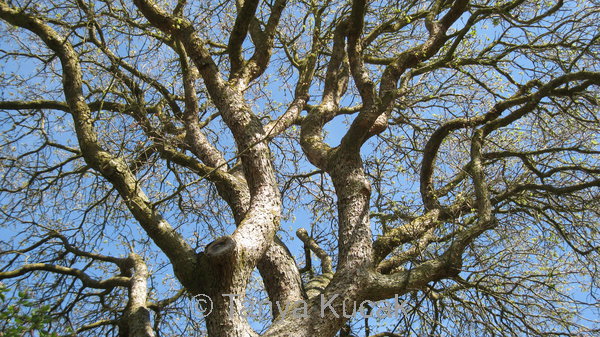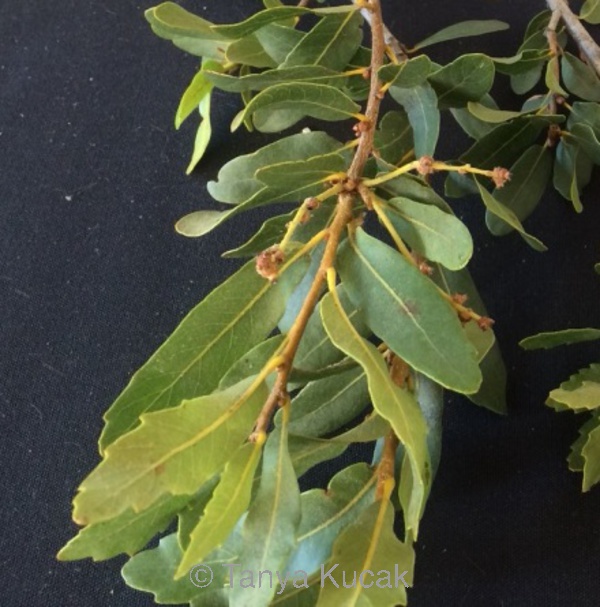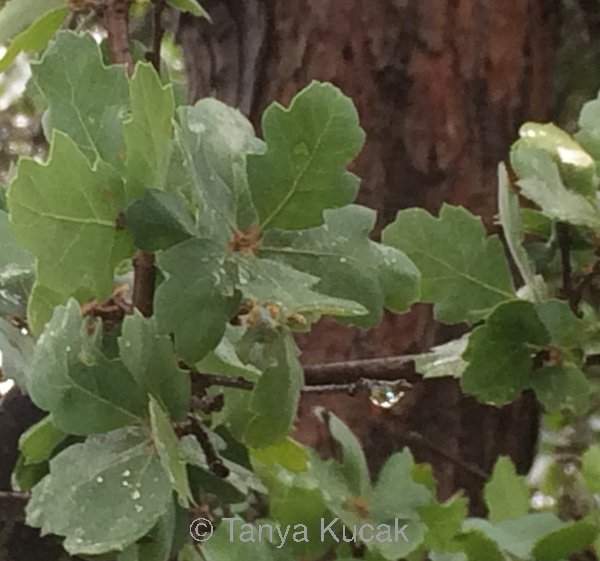
If you love oak trees but are wary of planting one because of Sudden Oak Death (SOD), you'll be glad to know that not all native oaks are susceptible to this pathogen. SOD is a problem for home gardeners mostly on the edges of wildlands, where acres of trees, in places, have been lost. It is also prudent to avoid planting known carriers, or host plants, of the pathogen if you live near wild oaks, and to avoid importing mulch from areas where the infection has been found.
The iconic oak of California hillsides, coast live oak, is susceptible. So are the other native red/black oaks, including California black oak, interior live oak, and shreve oak. Nonnative oaks in this group include red, scarlet, and pin oaks. In addition, the oaks classified as intermediate oaks are also susceptible. This taxonomic group includes canyon live oak and island oak, as well as three shrub oaks: huckleberry oak, Cedros Island oak, and Palmer's oak.
So what's left? In fact, the pathogen has not infected the largest group of native oaks, the white oaks, nor are they thought to be hosts of the pathogen. Furthermore, no hybrids have been found between white and red/black oaks, although “promiscuous hybridization” is found among the shrubby white oaks, according to Matt Ritter, a San Luis Obispo biology professor who hosted a recent workshop on tree identification.
The names of the groups refer to the color of the wood: red/black oaks have reddish brown wood; intermediate oaks have light brown wood; and white oaks have light brown or yellowish wood. Other characteristics define the groups as well.
The white oak group includes 4 trees – including California's largest oak, the valley oak – and 8 shrub oaks that are not often seen in gardens. Notably, the acorns of white oaks are usually less bitter than the acorns of red/black oaks. Native white oak trees are:
Valley oaks once covered the Central Valley, but most of these magnificent trees were cut down to convert the fertile soils to agricultural use. They thrive in rich soils and where their roots can find groundwater, such as near a watercourse or in areas with a high water table, so they are more adaptable to gardens than other oaks. Young trees are more upright, with age developing a rounded profile, the craggy branches swooping to touch the ground. Like other native oaks, they support a diverse and abundant population of beneficial bugs and birds.

In the wild, blue oaks grow on poor soils and in areas with little rainfall, so are well adapted to dry slopes and hot areas. This blue oak, in suburban Los Altos, was starting to leaf out in the spring. (Photo: Tanya Kucak)

Engelmann oaks are smaller than other white oaks, with blue-green semievergreen leaves, and are less commonly planted than other white oaks. (Photo: Tanya Kucak)

Blue oaks are named for the blue-green color of their deciduous leaves, seen here in the rain against the reddish brown bark of a young tree. (Photo: Tanya Kucak)
© 2016 Tanya Kucak